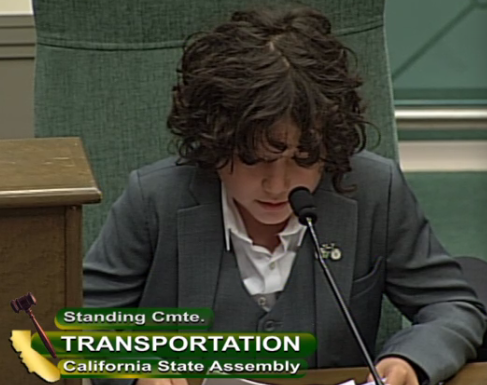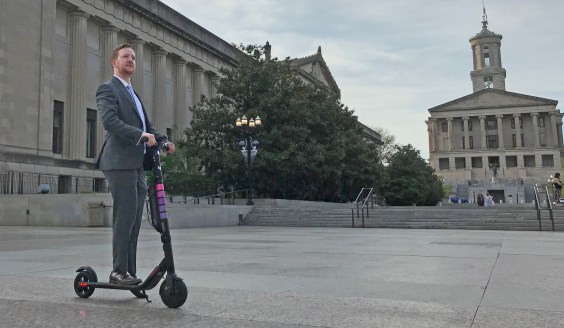Moses Trujillo pretty much won the vote before the discussion even started. Testifying to the Assembly Transportation Committee in support of Senator Scott Wiener's complete streets bill, he told them: "My mom won't let me walk to school alone, even though I'm going to be in the fifth grade," he said, "because it's too dangerous."
That's because to get to school, which is near his home in Berkeley, he has to cross State Highway 13, also known as Ashby Avenue. That street, which runs next to his school playground, is "basically a four-lane highway," he said. "Often cars are weaving, paying more attention to getting somewhere than to people trying to cross the street."
He talked about founding the Polar Bear Club at his school, Malcolm X Elementary, to join with fellow students to learn about and take action on climate change. They organized a march at the school, where they were seen, according to Trujillo, by "many drivers speeding down the street."
"As a kid I can do some things," he said, "but we depend on adults to handle bigger problems like providing safe streets for all."
His words set the tone for today's hearing on S.B. 127, which the committee passed even though its chair said he still had "serious concerns" with it. Jonathan Matz of Safe Routes Partnerships pointed out that "there are hundreds of schools located, like Malcolm X, right next to highways."
Comments from some of the committee members, however, made it clear that they were more concerned with whether the bill would take money away from building roads.
Assemblymember Tom Daly (D-Anaheim) and Chair Jim Frazier (D-Discovery Bay) asked representatives from Caltrans whether the bill "would take away from maintenance of the California state highways to do this," and whether S.B. 127 was just a sneaky way to augment the existing Active Transportation Program.
Assemblymember Vince Fong (R-Escondido) questioned whether it would change the way highway funding works now by prioritizing walking and biking over, for example, widening Highway 99.
Note that the State Highway Operation and Protection Program (SHOPP), which this bill addresses, is not supposed to be used for widening Highway 99, or any highway.
Caltrans could not answer the questions about how much it might cost, in part because S.B. 127 does not trigger new spending. It doesn't trigger new projects, either.
Senator Wiener reminded committee members that the bill is "not introducing a new concept." Caltrans already includes pedestrian and bicycle facilities in certain projects, and its policies call for it do so, but "the challenge is that it's not structured-- so sometimes it happens, and sometimes it doesn't."
S.B. 127 creates accountability to make sure that Caltrans follows its existing complete streets policy. It also forces the agency to keep track of crosswalks and bike lanes and bus stops on state highways, so that in the future it will be possible for Caltrans to answer the questions about cost.
"It also provides flexibility," said Wiener. "We're not trying to put a strait jacket on the agency."
Chair Frazier thanked Senator Wiener for his support on last year's gas tax hike, which increased the funding for the SHOPP program. "I really do support complete streets," he said. "I love to cycle. I love to hike. I've been [to Half Moon Bay] and hiked on Highway 1."
But, he said, complete streets need to be built only "when and where they are feasible, based on data-driven necessity," and not in rural counties "where it's not necessary," he said. "I have not seen that amendment in this bill."
Frazier applauded Senator Wiener for his tenacity and passion. "You're like a dog with a bone on this, and I applaud you for it," he said. But then he threatened to derail its passage in the Assembly "if we can't work together" to address his concern about the bill's universality.
Note that S.B. 127 applies to certain highways, specifically not limited-access freeways, that run through populated areas--that is, places where people live, work, and go to school. These are all places where people may want to get around by walking or biking safely. In some rural counties, those roads are a town's main street, and sometimes the only street.
The bill passed with eight votes, with Fong voting against it and his fellow Republicans either voting "no" or abstaining.
Follow Streetsblog California on Twitter @StreetsblogCal






